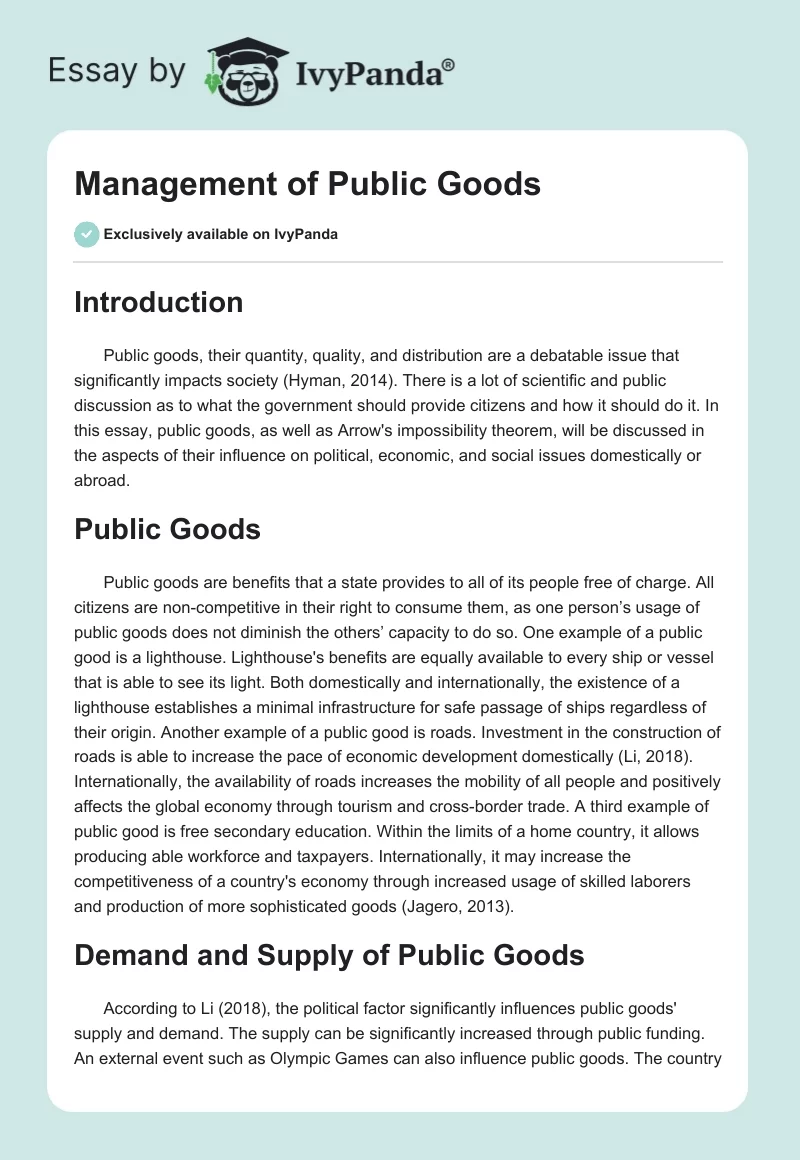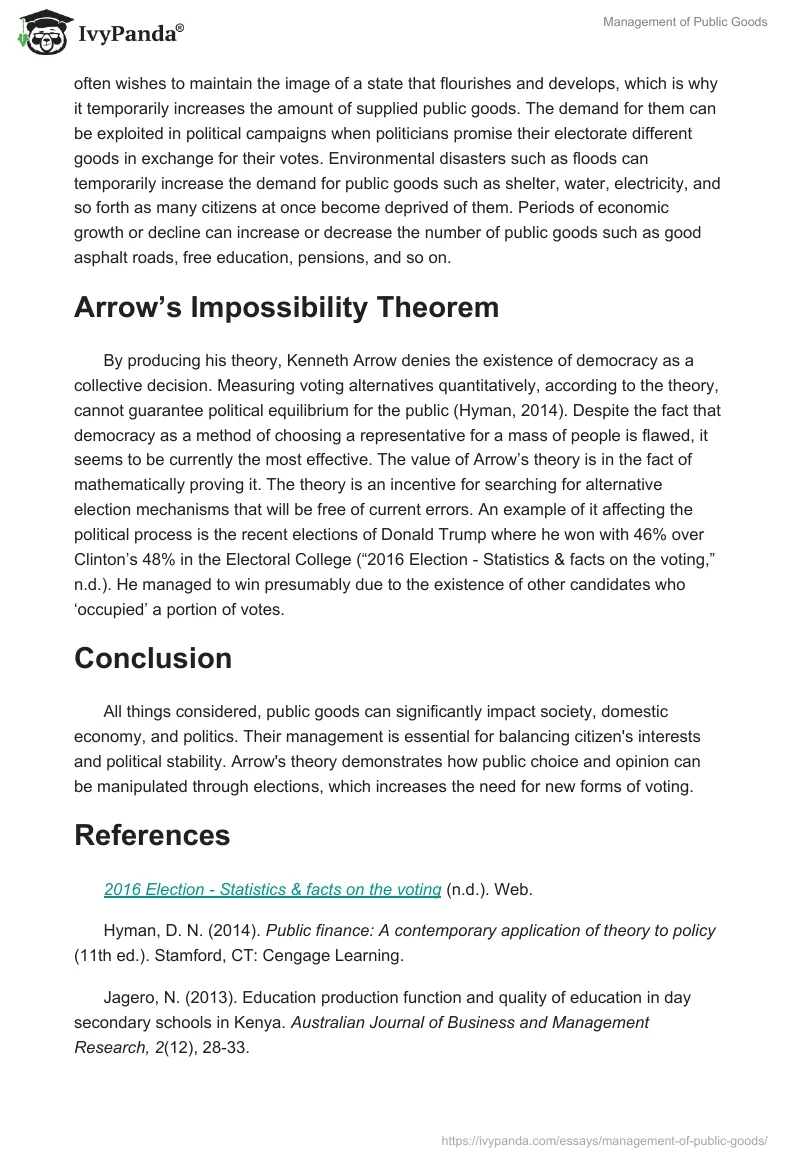Introduction
Public goods, their quantity, quality, and distribution are a debatable issue that significantly impacts society (Hyman, 2014). There is a lot of scientific and public discussion as to what the government should provide citizens and how it should do it. In this essay, public goods, as well as Arrow’s impossibility theorem, will be discussed in the aspects of their influence on political, economic, and social issues domestically or abroad.
Public Goods
Public goods are benefits that a state provides to all of its people free of charge. All citizens are non-competitive in their right to consume them, as one person’s usage of public goods does not diminish the others’ capacity to do so. One example of a public good is a lighthouse. Lighthouse’s benefits are equally available to every ship or vessel that is able to see its light. Both domestically and internationally, the existence of a lighthouse establishes a minimal infrastructure for safe passage of ships regardless of their origin. Another example of a public good is roads. Investment in the construction of roads is able to increase the pace of economic development domestically (Li, 2018). Internationally, the availability of roads increases the mobility of all people and positively affects the global economy through tourism and cross-border trade. A third example of public good is free secondary education. Within the limits of a home country, it allows producing able workforce and taxpayers. Internationally, it may increase the competitiveness of a country’s economy through increased usage of skilled laborers and production of more sophisticated goods (Jagero, 2013).
Demand and Supply of Public Goods
According to Li (2018), the political factor significantly influences public goods’ supply and demand. The supply can be significantly increased through public funding. An external event such as Olympic Games can also influence public goods. The country often wishes to maintain the image of a state that flourishes and develops, which is why it temporarily increases the amount of supplied public goods. The demand for them can be exploited in political campaigns when politicians promise their electorate different goods in exchange for their votes. Environmental disasters such as floods can temporarily increase the demand for public goods such as shelter, water, electricity, and so forth as many citizens at once become deprived of them. Periods of economic growth or decline can increase or decrease the number of public goods such as good asphalt roads, free education, pensions, and so on.
Arrow’s Impossibility Theorem
By producing his theory, Kenneth Arrow denies the existence of democracy as a collective decision. Measuring voting alternatives quantitatively, according to the theory, cannot guarantee political equilibrium for the public (Hyman, 2014). Despite the fact that democracy as a method of choosing a representative for a mass of people is flawed, it seems to be currently the most effective. The value of Arrow’s theory is in the fact of mathematically proving it. The theory is an incentive for searching for alternative election mechanisms that will be free of current errors. An example of it affecting the political process is the recent elections of Donald Trump where he won with 46% over Clinton’s 48% in the Electoral College (“2016 Election – Statistics & facts on the voting,” n.d.). He managed to win presumably due to the existence of other candidates who ‘occupied’ a portion of votes.
Conclusion
All things considered, public goods can significantly impact society, domestic economy, and politics. Their management is essential for balancing citizen’s interests and political stability. Arrow’s theory demonstrates how public choice and opinion can be manipulated through elections, which increases the need for new forms of voting.
References
2016 Election – Statistics & facts on the voting(n.d.). Web.
Hyman, D. N. (2014). Public finance: A contemporary application of theory to policy (11th ed.). Stamford, CT: Cengage Learning.
Jagero, N. (2013). Education production function and quality of education in day secondary schools in Kenya. Australian Journal of Business and Management Research, 2(12), 28-33.
Li, J. (2018). The influence of public goods on the development of china’s regional economy – A spatial econometric approach. European Scientific Journal, 14(13), 1-13. Web.


